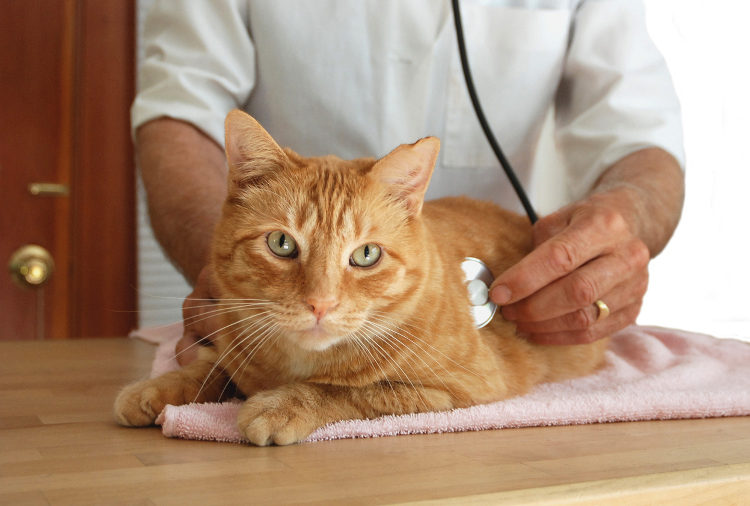Worms. It’s not a word you want to hear as a cat-owner. I certainly wasn’t happy when Daenerys recently managed to get tapeworms, and neither was anyone else in the house. One cat with worms means four cats are getting pilled around here, and whew. A bunch of cantankerous cats make for a tetchy household!
Luckily, since worms are actually a pretty common ailment in cats, it was a pretty easy fix: get a diagnosis, get medication, follow up with redundant round of medication, and done! And now I’m here to tell you all about how to identify worm signs (hey, we’re in a Dune novel now!) and reassure you about this admittedly gross but ultimately run-of-the-mill situation for your cats.
TAPEWORMS
Tapeworms are long, flat, and segmented with intact lengths ranging between 4 and 28 inches. Yeah. Disgustingly huge, but you’re not likely ever to see that: what you’ll see, instead, are tiny rice-like segments in the litter box or hanging ‘round your cat’s back end (specifically the fur around their anus). They might even vomit up a larger section.
The main symptoms of tapeworms include:
Visible segments, rice-like – in feces, around the anus, and possibly in vomit.
Vomiting.
Weight loss, from a little to a lot.
Living tapeworm segments protruding from the anus.
How does a cat get tapeworms?
Tapeworms are picked up from fleas: if your cat swallows a flea that’s swallowed a tapeworm egg, boom. Circle of life, but instead of becoming the Lion King, your cat’s now got a tapeworm in their intestines, screwing up their digestion and health. Yet another reason to make sure that both your outdoor and indoor cats are well-protected against fleas!
What’s the treatment like?
Your vet will diagnose your cat with tapeworms, and then give you a pill. They even have tuna-flavored, chewy versions now for your cat to turn their noses up at! Your vet will probably give you a second dose to administer two weeks later just to be sure you got all the worms.
ROUNDWORMS
Roundworms have the distinction of being the Most Common Parasite in cats, with almost every cat having them at some point in their lives. (Roundworms brag about this in all the Worm Bars, but the other worms don’t care anymore.) These worms look like spaghetti with tapered ends, averaging 3 to 4 inches in length – and that’s what you’ll find yourself looking for if you suspect your kitty’s packing worms.
The main symptoms of roundworms include:
What looks like spaghetti in your cat’s feces or vomit.
A sudden and short-lived potbelly on your feline.
A dull coat.
Lethargy or listlessness.
Vomiting, runny stools, or diarrhea.
How does a cat get roundworms?
Roundworms are most commonly passed along from an infected cat, with one of the more common scenarios being from infected mother’s milk. It’s a bummer, but that’s why your vet checks kittens for worms on the regular. Your cat snacking on the feces of an infected cat (I don’t know why, but it happens), or eating an infected rodent (or roach or bird or…) also results in your cat becoming homebase for roundworms.
What’s the treatment like?
Treatment is a round of deworming medication. Treatment also includes a healthy dose of preventative care – kittens are regularly dosed with roundworm medication, and tested for roundworms quarterly for their first year of life. Adults should be tested a couple of times each year.
Further notes:
Humans can also get roundworms. Surprise! So: treat for roundworms thoroughly, and avoid direct contact with your pet’s feces – or soil where your pets most often leave their feces. Not like you were already doing that or anything!
HOOKWORMS
Hookworms are the trickiest of these three, not being visible to the naked eye. These skinny parasites are much smaller than an inch, and their eggs are microscopic. These tricksy jerks feed on blood through your cat’s intestinal wall, and can cause serious anemia.
The main symptoms of hookworms include:
Loose stool or diarrhea, particularly with blood in the feces.
Weight loss.
Lethargy or listlessness.
Discoloration of nostrils, lips, and gums.
How does a cat get hookworms?
It’s the same old story: your cat picks up hookworms from the standard infected sources. Kittens can get them through infected milk. If they step in infected feces, they may groom their feet and swallow some hookworm larvae – or, to really give you some nightmare fuel, the hookworms can burrow through a cat’s skin.
What’s the treatment like?
The treatment is also standard: de-worming medication. Your cat just may need multiple doses to be sure the hookworms are completely eradicated, especially since the larvae can hang out in feces for weeks. If an infected kitten loses too much blood, they may need to be on blood transfusions to help them survive long enough for the treatment to work. This is also another of those worms policed with preventative care – kittens receive routine treatments, and cats should be regularly tested.
Further notes:
Humans can get these, as well! Like I said: nightmare fuel. They can burrow through your skin, too, so it’s SUPER IMPORTANT to keep you and your cat’s environments clean of contaminated sources.
These three are some of the most common worms you might find in your cats. While these infections could become serious, mostly in kittens, they’re handled easily with quick vet visits and deworming medication. But if, like me, you want to do every single thing you can to prevent an infection, I have two big recommendations:
Keep your cats inside. Keep your place clean.
That’s it! So, relax: you’re well-armed for a worm-killing and worm-free future.






